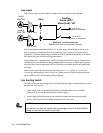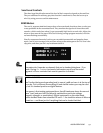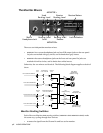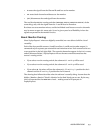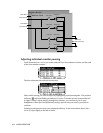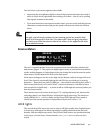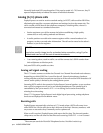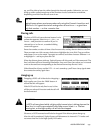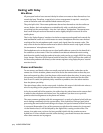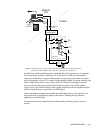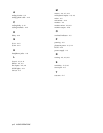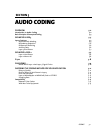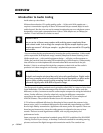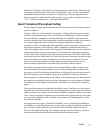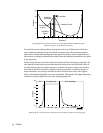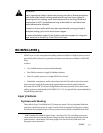4-14 AUDIO OPERATIONS
Dealing with Delay
Mix-Minus
All perceptual coders have too much delay for talent on remote to hear themselves via a
round-trip loop. Therefore, a special mix-minus arrangement is required – exactly the
same as has been used with satellite linked remotes for years.
The principle is this: The remote performers do not hear themselves via the studio cue
return. Rather, their microphones are mixed locally with a studio feed which has
everything but the remote audio – thus the “mix-minus” designation. The announcers
hear a non-delayed version of themselves and a slightly delayed version of all of the
studio pieces.
That’s why ZephyrExpress’ monitor circuits have separate routing and level controls for
SEND and RECEIVE audio: it’s a trivial matter to create a headphone mix that uses the local
send signal for the microphones and a music-only signal from the remote codec. The
only caveat is that the distant studio must be able to send the music-only signal, without
the announcers’ microphones mixed in.
The headphone mix can also be sent to a local public address system, for the benefit of a
live audience at the remote. If the live audience can tolerate monaural music coming
back from the studio, both the send and receive paths can be on a single ISDN line using
Layer 3mono. The other ISDN channel could be used for a POTS call from the studio, to
let the studio producer talk directly to the remote engineer using ZephyrExpress’ second
monitor circuit.
Phones and Remotes
To save money and hassle, callers are usually received at the studio, rather than at the
remote site. In this situation, phones need to be fed to the remote talent so that they can
hear and respond to callers. And the phone callers need to hear the talent. In many cases,
the remotes are sufficiently distant that the station can not be monitored for the caller
feed. Even if it could, the profanity delay would be a problem, since the talent needs to
hear the phone pre-delay.
The talent hears callers via the return path. As before, this return is fed with mix-minus: a
mix of everything on the program bus minus the remote audio.
As for the second half of the equation, the callers hear the talent because the remote feed
is added to the telephone mix-minus buss. No problem if you have a set-up which
permits selective assignment to the phone mix-minus.
The most common problem with this arrangement is a result of a phone hybrid with too
much leakage combined with the system delay. If the hybrid isn't doing a good job of
preventing the send audio from leaking to its output, the special remote send mix-minus
is corrupted. Remember, if any of the announcer audio from the remote site is returned
via the monitor feed, it will be delayed by the digital link, causing an echo effect. The
answer is to make sure you have the best possible hybrid with the maximum trans-
hybrid loss. If it has variable override (caller ducking), you should increase the amount
when these remotes are in progress.



